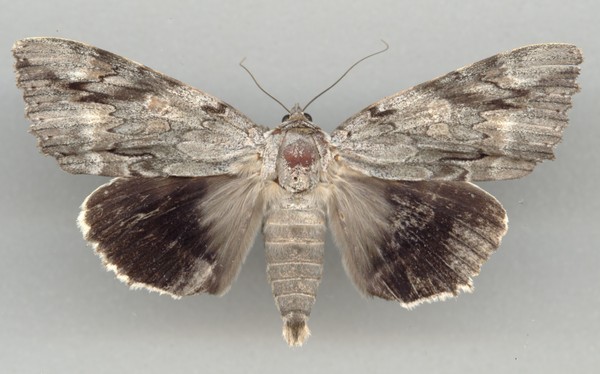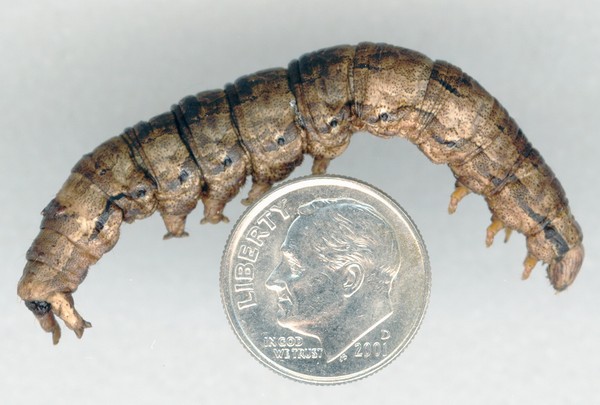Pecan Catocala
 Scientific Name
Scientific Name
Catocala sp.
Hosts
Pecan catocala commonly feed on pecan, hickory, and other trees.
Symptoms
The amount of foliage lost is generally minimal unless outbreaks occur in conjunction with other defoliators (e.g., sawflies, unicorn caterpillars, etc.). Repeated or heavy defoliation of younger trees can affect the hardiness of that plant, making it more susceptible to winter injury or other problems.
Life Cycle
 Adults emerge from late April to early May. They mate and begin laying eggs shortly
after emergence. The larvae will feed on leaves up to about mid-June. Economic damage
is rare in well managed orchards. The larvae will eventually spin a loose cocoon attached
to the foliage and the pupal stage will overwinter at this site. There is one generation
per year.
Adults emerge from late April to early May. They mate and begin laying eggs shortly
after emergence. The larvae will feed on leaves up to about mid-June. Economic damage
is rare in well managed orchards. The larvae will eventually spin a loose cocoon attached
to the foliage and the pupal stage will overwinter at this site. There is one generation
per year.
Description
These adult moths are large, quick flying insects that often inhabitthe tree trunksof pecan. One species, Catocalacerogama is extremely well camouflaged, with shades of dull gray and white, making the moth blend in particularly well on tree bark. Other species may possess brightly colored hindwings with shades of pink or orange. This explains the common name of this group, known as the ilia underwings. The adult wingspan may attain a width of 2 to 3 1/2 inches. The forewings are generally held rooflike over the body and appear mottled gray or brownish. The hindwings are not revealed until the moth takes flight. When fully grown, the larvae can attain a length of 2 1/2 to 3 inches and are dark gray in color. This coloration allows them to blend in quite well with the tree batk, where they commonly hang out. Larvae also sit very still unless disturbed, which is when they will whip their bodies violently from side to side. This serves as a deterrent to most predators.
Control
Please contact your local county extension office for current information.
